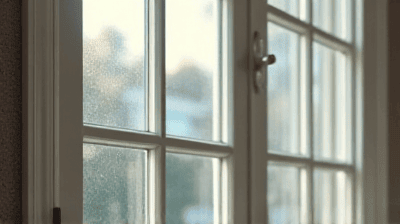How to Maintain Clean Windows Year-Round with Less Effort

Keeping your windows clean throughout the year can often feel like a never-ending chore. However, with the right strategies and techniques in place, you can maintain sparkling clean windows with minimal effort.
Understanding the Need for Clean Windows
Benefits of Clean Windows
Improved Aesthetics: Clean windows enhance the overall appearance of your home, allowing natural light to pour in and improving the view both inside and out.
Better Air Quality: Regularly maintained windows help reduce the amount of dust and allergens that can accumulate in your living spaces.
Increased Longevity: Maintaining clean windows can prevent oxidation, dirt build-up, and staining, extending the life of your glass and frames.
Energy Efficiency: Clean windows can help with insulation. When dirt accumulates, it can impact how your windows block out heat or cold.
Curb Appeal: Clean windows significantly enhance the curb appeal of your home, which is particularly important if you are considering selling.
Common Window Cleaning Challenges
Dirt and Grime: Over time, windows can accumulate dirt from the outside and dust from the inside, requiring regular cleaning to maintain visibility.
Hard Water Stains: Areas with hard water may experience mineral build-up on glass surfaces that can be difficult to remove.
Weather Conditions: Rain, wind, and snow can lead to dirty windows. Seasonal changes affect how often your windows need cleaning.
Inaccessible Areas: High or hard-to-reach windows can be challenging to maintain, making it easy to ignore them.
Essential Tools and Supplies for Easy Maintenance

To efficiently maintain clean windows, having the right tools and supplies on hand will make the task significantly easier. Here is a comprehensive list of must-have items.
Basic Tools for Window Cleaning
Squeegee: A quality squeegee is crucial for removing water and cleaning solutions from the glass surface without leaving streaks.
Microfiber Cloths: These cloths are excellent for cleaning and drying without scratching the glass. They trap dirt and grime effectively.
Scrub Brush: A soft-bristled scrub brush can help remove dirt and grime from the glass and window frames.
Spray Bottle: A refillable spray bottle makes it easy to apply your cleaning solution to windows.
Bucket: A bucket is handy for mixing larger quantities of cleaning solutions.
Recommended Cleaning Solutions
Commercial Window Cleaners: Many effective window cleaners are available on the market. Choose a product that is streak-free and ammonia-free for the best results.
DIY Solutions: Homemade cleaning solutions are easy to make and effective. Consider the following recipes:
- Vinegar and Water: Mix equal parts of white vinegar and water in a spray bottle. This solution cuts through grime and leaves glass streak-free.
- Dish Soap Solution: A few drops of mild dish soap in a bucket of warm water can efficiently break down dirt.
Hard Water Treatment: For hard water stains, consider using a mixture of vinegar and baking soda. Apply it to stains, let it sit for a few minutes, then scrub and rinse.
Optional Tools for Efficiency
Extension Pole: An extension pole can help you reach high windows without the need for a ladder.
Telescoping Squeegee: A telescoping squeegee allows you to extend your reach for high or hard-to-reach windows.
Window Cleaning Robot: For those who prefer an automated solution, consider investing in a window cleaning robot designed to make the job easier.
Step-by-Step Guide to Cleaning Windows
To maintain clean windows year-round, you should establish a regular cleaning routine. Here’s how to do it efficiently:
Step 1: Assess the Windows
Inspect for Damage: Before cleaning, take a moment to check the window frames and glass for any damage or issues that need addressing.
Choose the Right Time: Opt for an overcast day to clean your windows. When the sun is shining directly on them, the cleaning solution may dry too quickly, leading to streaks.
Step 2: Prepare Your Cleaning Solution
Choose Your Solution: Depending on your preference, either select a commercial window cleaner or make a DIY solution.
Fill Your Spray Bottle: Pour your chosen solution into the spray bottle for easy application.
Step 3: Dust and Wipe
Dust Frames and Sills: Use a dry microfiber cloth to dust the window sills and frames. This step prevents dirt from mixing with your cleaning solution.
Remove Loose Debris: Any loose debris or spider webs should be cleared away before applying cleaning solutions.
Step 4: Apply the Cleaning Solution
Spray Generously: Apply the cleaning solution generously to the glass surface, ensuring full coverage.
Let It Sit: Allow the solution to sit for a minute or two to break down any stubborn grime.
Step 5: Squeegee Technique
Top to Bottom: Start squeegeeing from the top corner of the window and pull it across in a smooth, horizontal motion, working your way down.
Wipe the Blade: After each pass, wipe the squeegee blade with a clean microfiber cloth to remove dirt.
Overlap Strokes: Slightly overlap each stroke to avoid missed spots and streaks.
Step 6: Final Wipe and Touch-Up
Inspect for Streaks: Step back and assess your work. If you see any streaks or missed spots, take a microfiber cloth and gently buff those areas.
Clean Frames and Sills: Wipe down any remaining frames and sills with a damp cloth to remove any cleaning solution.
Establishing a Maintenance Routine

To maintain clean windows with less effort, it’s important to establish a practical cleaning routine. Here are some strategies to consider:
Seasonal Cleaning Schedule
Quarterly Deep Clean: Aim to clean your windows thoroughly four times a year. This ensures that dirt doesn’t accumulate and makes future cleaning easier.
Monthly Quick Wipe-Down: Each month, perform a quick wipe-down of easily accessible windows and frames to keep them looking fresh.
Daily Maintenance Tips
Inspect Regularly: Make it a habit to glance at your windows daily to spot any dirt or smudges that may need attention.
Quick Touch-Ups: If you notice any water spots or finger smudges, use a microfiber cloth to quickly wipe them away.
Preventing Dirt Build-Up
Use Screens: Consider installing screens on your windows to minimize dirt and debris from entering while still allowing fresh air.
Trim Landscaping: Keep trees and bushes trimmed back to prevent them from touching windows, which can cause scratches and dirt transfer.
Seal Windows and Frames: Ensure that your windows are properly sealed and caulked to prevent moisture build-up and dirt accumulation.
Addressing Specific Window Issues
Certain issues can arise that may require more specific attention. Here’s how to tackle common window problems:
Hard Water Stains
Vinegar Application: Apply vinegar directly to hard water stains and allow it to sit for at least 30 minutes before scrubbing.
Baking Soda Paste: Make a paste with baking soda and water, apply it to the stained area, and scrub gently before rinsing.
Smudges and Fingerprints
Rubbing Alcohol Solution: For greasy fingerprints, use a mixture of rubbing alcohol and water for a quick spot clean.
Dish Soap Treatment: A few drops of dish soap in water can also effectively remove stubborn smudges.
Condensation Buildup
Improve Ventilation: To prevent condensation, ensure that your home is well-ventilated, especially in areas with high humidity.
Use Dehumidifiers: If you live in a particularly humid area, consider using dehumidifiers to reduce moisture levels.
Seasonal Considerations for Window Maintenance

Different seasons can affect how you maintain your windows. Here’s a breakdown of what to focus on throughout the year:
Spring Cleaning
Thorough Inspection: After winter, inspect your windows for any damage from ice or snow.
Clean Away Winter Residue: Remove any debris that may have built up during the winter months.
Summer Maintenance
Frequent Wipes: Dust and pollen can accumulate quickly in summer. Increase the frequency of your quick wipes.
Prepare for Storms: If you live in an area prone to storms, consider covering your windows with storm shutters as needed.
Fall Preparations
Inspect Seals: Check weather stripping and seals around your windows and replace them if necessary before winter.
Gutter Cleaning: Regularly clean gutters to ensure that water flows away from your windows.
Winter Care
Avoid Frost Buildup: If frost builds up, use a plastic scraper to gently remove it without scratching your glass.
Monitor Drainage: Keep an eye on any drainage areas near your windows to prevent ice accumulation.
Eco-Friendly Window Cleaning Solutions
If you prefer to use environmentally friendly cleaning products, there are plenty of effective options:
Homemade Solutions
Vinegar and Water: This classic solution is both effective and non-toxic. It works well for cutting grease and grime.
Citrus Infused Vinegar: Infuse vinegar with citrus peels for added scent and cleaning power. This can be a refreshing alternative.
Natural Cleaning Tools
Old Newspaper: Many people swear by using old newspapers to dry windows. They leave a streak-free shine while being recycled.
Recycled Cloths: Use cloth scraps from old clothing or towels to decrease waste while cleaning.
Conclusion
Maintaining clean windows year-round does not have to be a labor-intensive task. With a bit of planning, the right tools, and a consistent routine, you can keep your windows sparkling with minimal effort. By incorporating regular cleaning into your schedule, addressing specific issues promptly, and utilizing eco-friendly solutions when possible, you ensure that your home remains bright, inviting, and well-maintained.
Remember that the key to success is consistency and developing habits that prevent dirt accumulation. With these strategies in place, you’ll enjoy the benefits of clean and clear windows all year long, enhancing the beauty of your home while creating a healthier living environment.


